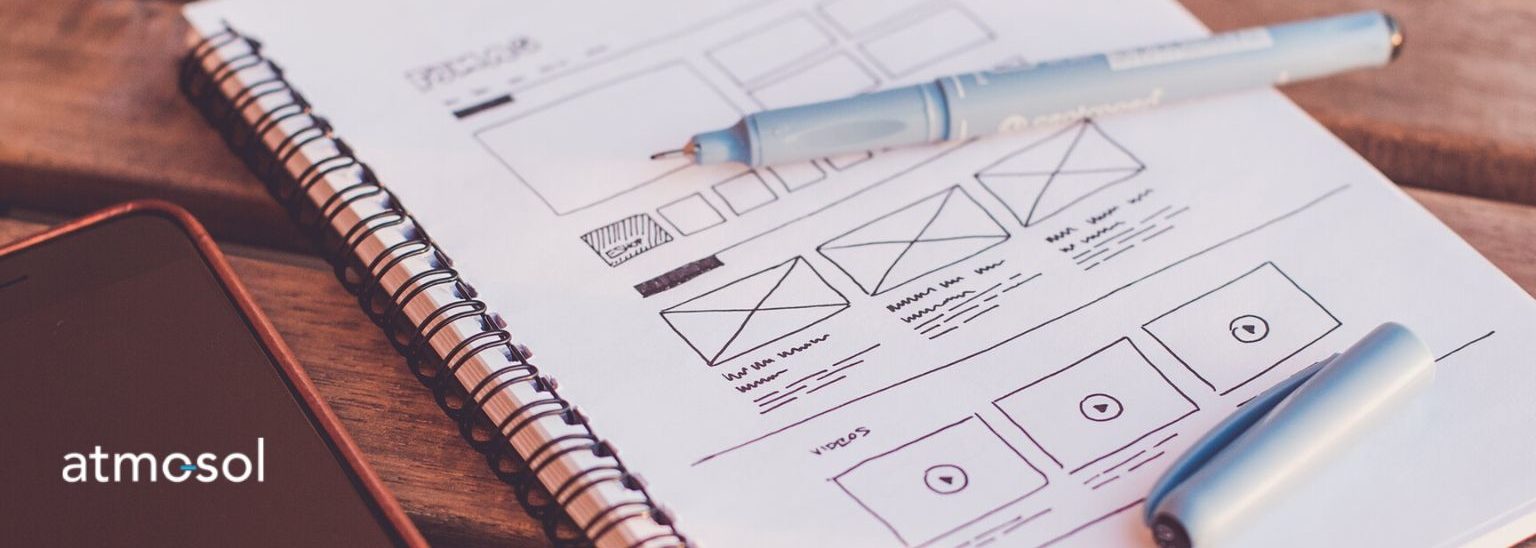This article is part of a series of articles from atmosol on eCommerce conversion optimization. This article focuses on optimizing the user journey. Today’s eCommerce users are pampered by the excellent user experience provided by leading retailers and will shop elsewhere if your site can’t compete at the same level. Let’s look at some user journey optimizations that can be considered to improve conversion.
Improve Product Discovery
Users find a product they are looking for in different ways depending on how and where they landed up on your site. Making sure they can find what they are looking for at each of these landing pages is crucial to reduce bounce rates and improve conversion. Let’s look at a few different ways users find products
Home page Merchandising
Images and products on the home page are what a user who lands on the home page sees first and hence is the best location to promote products that customers are most likely to buy if they are simply browsing and haven’t made up their mind about what to buy. Personalization of the home page can significantly improve click rates on these products since the customers see products that are to their taste. The home page can also be the right place to surface products that you want customers to see, like new product launches or more profitable products.
Merchandizing is hard to get right even in physical stores and is best optimized through A/B testing of different combinations to measure click-through and conversion.

Search and its role in eCommerce Conversion Optimization
If a user lands on the home page of a store looking for something specific, there’s a high chance they will use the search functionality to search for the product. If search is able to return results that customers are looking for and want to buy, it eases one step of the user’s journey on the website. While this seems easy enough and is supported by most platforms, there are some nuances that a store owner should be aware of
Catalog content
Any search tool is only as good as the content in your catalog since the search engine us essentially using the content to find and display products. Add different synonyms to your products catalog to display them when users search for the same product in using different words.
Spelling Errors
Many modern search engines are able to handle spelling errors, but if you are using one that doesn’t handle spelling errors, it helps to add common misspellings to your catalog. Whatever the method, stores should stive hard not to show the dreaded “No products found” message which almost always drives customers off the site.
Autocomplete
Autocomplete enables users to quickly search for products in your catalog and avoids spelling errors by prompting them the correct spelling. It also enables stores to surface content that might further refine a user’s search. For example, a user searching for “outdoor table” might see an option for “outdoor table with umbrella” and if that’s what the user really wanted, it guides the user to the right search results and eliminates undesired results.
Natural language processing
Another important aspect of a search engine to consider is its ability to understand natural language especially in searches like “Phone case” vs. “Phone with case” where understanding the conjunctions and language constructs becomes important to understand what the customer is looking for
Personalization
Personalization of search results is a relatively new concept that personalizes results based on a user’s previous interactions and popular searches. When implemented correctly, this gives the users a feeling of easy discovery.
Filters
While filters are not necessarily part of search, a good set of filters make up for deficiencies in search capability by enabling the user to further refine the search for the exact product manually. Displaying the right set of filters can sometimes be hard especially for stores selling multiple categories of products that require different sets of filters. Planning early for filters and having the right attributes in products for filters can make this task easier.
Direct Links
Users can also land up directly on a category page or a product page when clicking through from marketing links on the internet. When users land on a page this way, it’s important to make sure that your marketing links all lead to pages with relevant results and not to your home page or a generic page. For example, if a user is searching for “Green T-Shirt” and you land the user on a page with all T-shirts, there’s a high likelihood that the user will leave the page not wanting to sift through everything.

Improve Product Page
Product detail pages (or PDP in short) is another page that can make or break conversions. Once the customer has located a product, this is the page where the decision to add it to the cart is made. Following are few optimization guidelines
High Quality Images
Product images are the first things that customers look at when opening a product detail page. Having great images keeps the customer on the page and interact further with the page until a decision to add the product to cart is made. Having crisp, large product images and videos with the ability to zoom, pan, rotate, etc. is one of the best investments a store can make to increase conversion.
Technologies like Virtual Reality and Augmented Reality (AR/VR) can provide even better visualizations for higher value products to give the customers more confidence in what they are buying.
How Sales Copy helps in eCommerce Coversion Optimization
Well-written sales copy can evoke the right emotion and nudge the customer towards making the decision to add to cart. Best of brands create a brand voice ahead of time and create content using that voice to appeal to their ideal customer persona. Considering the tone and language of your content and how it represents your brand will enable you to appeal better to your target customers.
Complete Information
While the sale copy evokes the right emotions, product pages that lack enough information about the product often don’t convert well, especially for certain product categories. For example, furniture stores have to consistently display dimensions, weight, etc. in order for customers to make the right decision.
Call to Action
Having “Add to Cart” displayed prominently at eye level is known to increase conversion rate. Although a single button is ideal in terms of reducing clutter, some stores like Amazon have benefited from having another “Buy Now” option that speeds the checkout process. A/B testing can determine what works best for your store.
Psychological Triggers
Psychological research has identified several triggers that can nudge customers closer to wanting a product. Following are a few that have been used successfully by many eCommerce retailers
Trust
Including things like social proof, customer reviews, secure and transaction badges can achieve increased trust. This has the effect of reducing friction by eliminating the question of trustworthiness from the customers’ mind and is especially important for brands that don’t have significant name recognition.
Urgency
Urgency is known to impact purchase decisions and can be triggered through limited time offers.
Scarcity
Scarcity refers to text like “Only 2 available” that signifies that a product might sell out if the customer doesn’t buy now
Improve Checkout
Making checkout as frictionless as possible while addressing any final concerns in the customers’ mind reduces abandoned carts where the customers decides not to buy after adding items to cart. Following are a few aspects to consider

Payments
Payment issues cause a significant amount of cart abandonment because a customer is unable to make a payment.
Payment Methods
Enabling as many payment methods as possible will ensure that customers are able to pay using their method of choice. Following are some common payment methods that can be enabled on a site. When picking a payment gateway, stores should make sure they are able to support all or most of these methods
- Credit Cards/Debit Cards: The most preferred method to complete an online purchase.
- Prepaid Cards: An alternative for credit/debit cards.
- Bank Transfer: Although this method is not used much, it’s sometimes useful when the product value is higher.
- E-wallets: When platforms provide you with their own payment solutions (PayPal, Cash App, Google Pay, Apple Pay, Venmo etc.)
- Digital currencies: Cryptocurrencies are slowly being accepted on many platforms since they allow international payments with ease and reduced documentation.
Fraud Prevention
Fraud prevention sometimes clashes with ease of payment and makes payment harder and sometimes rejects payments that are not fraudulent. Stores must determine the right balance between fraud detection and ease of payment. Fraud detection services like that are used by a large amount of customers are able to use aggregated data from all the stores they serve to better detect fraud with minimal false positives. Stores should consider if such a service is right for them
Trust
Although we discussed trust on the product page, it is more important to display trust badges to assure the customer that payments made through the platform are safe at the checkout stage.
Return Policies
Customer friendly return policies that are prominently displayed further assures the customer that they can buy without the fear of being stuck with a product they don’t want. Free and easy returns cost your store money, but in almost all but the lowest value products, it’s usually a net positive. As in all the aspects of conversion optimization, stores can experiment with a few policies to see if there is an opportunity to reduce cost without affecting conversion.
Checkout our previous blog about heatmaps and how they impact conversion optimization.

